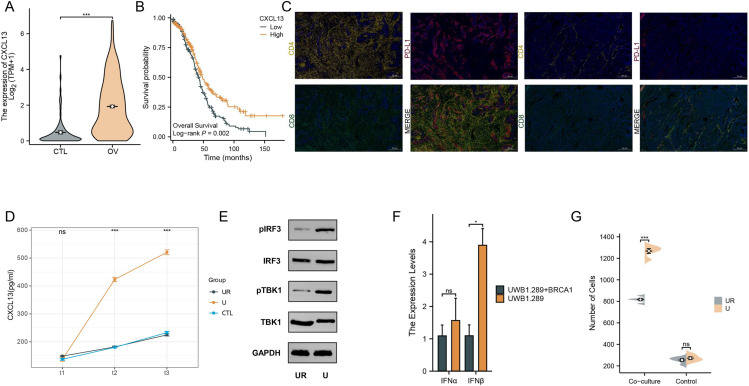
CXCL13 shapes tumor immune microenvironment in ovarian cancer with homologous recombination deficiency


Recently, immune checkpoint inhibitors (ICIs) and poly (ADP-ribose) polymerase inhibitors (PARPi) have played a pivotal role in prolonging the recurrence-free survival of patients with ovarian cancer (OC).1,2 Although PARPi have revolutionized the treatment of OC, the absence of reliable predictive biomarkers limits the broad application of ICIs for patients with homologous recombination (HR) deficiency (HRD).3 CXC-chemokine ligand 13 (CXCL13) is a cytokine constitutively secreted in the stromal cells of the B-cell region of secondary lymphoid tissue.4 It exclusively binds to the chemokine receptor CXCR5, which is abundantly expressed in subsets of mature circulating B lymphocytes, follicular helper T cells, and skin-derived dendritic cells, and governs the migration of these cells into secondary lymphoid organs in response to the CXCL13 gradient.5 In this study, we aimed to elucidate the role of CXCL13 in shaping the tumor immune microenvironment (TIME) in HR-deficient OC and to explore its relationship with the cGAS-STING signaling pathway.
